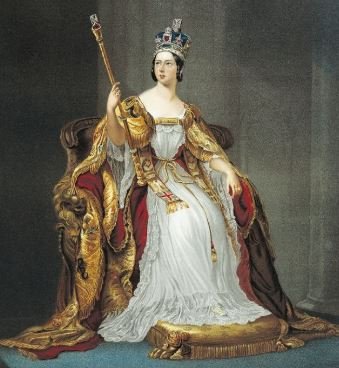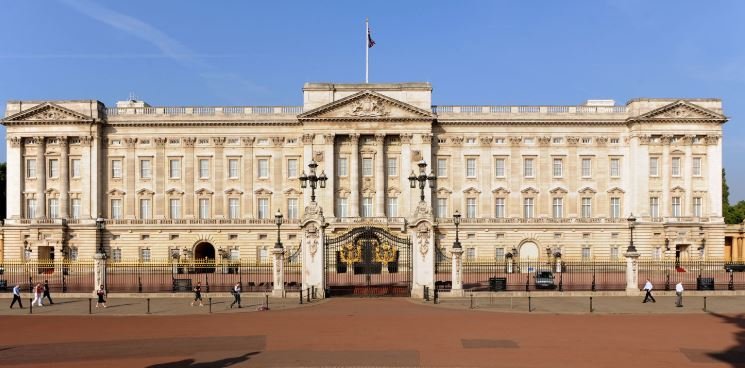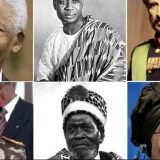9 Great Achievements of Queen Victoria
Facts about Queen Victoria
Name at birth: Princess Alexandrina Victoria of Kent
Date of Birth: May 24, 1819
Place of Birth: Kensington Palace, London, England
Date of Death: January 22, 1901
Place of Death: Osborne House, Isle of Wight
Burial place: Royal Mausoleum, Frogmore, Windsor
Parents: Prince Edward, Duke of Kent and Strathearn, and Princess Victoria of Saxe-Coburg-Saalfeld
Siblings: Carl, 3rd Prince of Leiningen, and Feodora, Princess of Hohenlohe-Langenburg
Husband: Prince Albert of Saxe-Coburg and Gotha
Children: Victoria, Edward, Alice, Alfred, Helena, Louise, Arthur, Leopold, and Beatrice
Reign: June 20, 1837 – January 22, 1901
Coronation: June 28, 1838 at Westminster Abbey, London, England
House: Hanover
Title: Queen of United Kingdom of Great Britain and Ireland, Defender of the Faith, Empress of India
Predecessor: William IV
Successor: Edward VII
Most famous for: Second-longest reigning monarch of Great Britain; spearheading the Victorian era
Major Achievements of Queen Victoria
Queen Victoria was the queen of the United Kingdom and Ireland from 1837 to 1901. Victoria was born on May 24, 1819. Her parents were Prince Edward and Princess Victoria, Duke and Duchess of Kent respectively. Growing up in a royal family, the early deaths of her father and his 3 brothers (two of who became kings: George IV and William III) catapulted the 18-year-old Victoria to the throne and rule all of Britain. The following are some of her greatest achievements.
Read More: 10 Longest-Reigning Monarchs From Britain
Credited with the Victorian Era.
Victoria’s great influence on the kingdom made her a popular political figure. The Queen had very strict morals and family values. Queen Victoria’s reign was one of the longest in the British monarchy; she ruled for 63 years. Her long duration on the throne ushered in the “Victorian era”. Her era, in particular, saw the United Kingdom evolve in several spheres: scientifically, politically, culturally and industrially. She also expanded the British Empire to include places all across Asia and Africa.
Read More:
Survived Several Assassination Attempts
Queen Victoria narrowly escaped about 6 attempts by assassins to take her life. The Queen used to ride through the streets on a carriage which was not enclosed. The first attempt on her life was in 1840 when a young man in his teens opened fire on her as she was enjoying a ride with her husband close to Buckingham Palace. Luckily enough, she was not hit by any bullet. The teenage shooter, by name of Edward Oxford, was arrested by eyewitnesses. Psychiatric examinations on the attacker revealed that he was mentally deranged. The same was most likely true of all her future assailants. They were found to be unsound. This probably explains why they dared pick up a weapon and aim at her majesty. As for Edward Oxford, he was released from a lunatic center and sent back to Australia.
Redeveloped Buckingham Palace
Upon her coronation on June 28, 1838, Victoria took up residence at Buckingham Palace. The palace was initially possessed by her deceased uncle – William IV – who sparingly lived there. This gave Victoria the singular honor of being the first queen to occupy Buckingham Palace. Her time in the building didn’t go without troubles. The palace was in a bad physical and structural state. It needed massive renovation exercise to put it in a befitting shape for the new queen. Victoria expended all her efforts and gave the palace a new look. She even constructed a new extension of the palace. Thanks to her massive reconstruction work on the place, the Buckingham Palace became the seat of power for subsequent British monarchs, including Queen Elizabeth II.
Philanthropic Works in Ireland
Beginning around 1845, Ireland suffered a devastating famine: it was termed as the Great Famine. The major crops that were affected by this blight were potatoes. For four painful years, more than a million citizens died in Ireland. Queen Victoria was highly troubled by the effects of the famine. She decided to donate, from her own pocket, an amount of £2,000 to help victims of the famine. Her donation was the biggest among the rest. In terms of today’s currency (i.e. 2016), her donation represents over £ 178,000. Despite her charitable deeds, controversial myths about her donation were fabricated during the latter part of the 19th century. In such myths, it’s said that she only donated £5 towards the relief funds for the famine-struck country.
Fostered Good Relations with France
Queen Victoria believed there was the need for Britain to develop a cordial relationship with her neighbor France. She carried out a number trips to France and met with key French leaders such as King Louis Philippe. Her visit set her a record as the first British queen to meet with a king of France. Louis also set himself a record by visiting Britain in 1844. This relationship was buoyed on by the history between the two countries.
In the century prior to her reign (i.e. the latter part of the 18th century), when the French Revolution broke out, the deposed French monarchs sought to build alliances with other monarchs across Europe.
Therefore, Queen Victoria’s goal was to bring back those years of solidarity and cooperation between her empire and the French. And as the 19th century drew to a close, her reign witnessed an all time high of friendly relationship between France and the UK.
Marriage Achievements and Family Values
Victoria wedded Prince Albert- her first cousin. She loved him to the fullest such that after his untimely death in 1861, Victoria went into a severe depression and hid from public appearances for a good number of years. After recovering from her grief (about a decade later), she wore black clothes on most of her public appearances for the rest of her life.
Prince Albert was such a great and dependable partner, advising the Queen on many important issues related to the realm. Among all her achievements stands tall the nine children she bore with Albert. Even though she was a mother, it’s said that she hated the painful labors associated with giving birth. All of nine of her children went on to become princess, princes, and dukes across Europe. Owing to this, as well as the sheer influence she had across the world, Queen Victoria was described as the Grandmother of Europe. When the Queen died in 1901, at the age of 80, her oldest son Prince Edward (Edward VII) succeeded her.
Signed the Reform Act of 1867
In 1867, the Queen endorsed the passage of a Reform Act which added more voters to the electoral register. The act increased the voter population by a factor of two; it enfranchised men who worked in the cities. Politically, she also helped to preserve the monarchy.
Became Empress of India
Queen Victoria was honored with an additional title, Empress of India. A civil war broke out in India which spiraled into pockets of deadly clashes across the colonies. Queen Victoria stayed neutral and condemned the civil wars. She decried the senseless loss of lives in India. The Queen also signed acts with Benjamin Disraeli (then-British Prime Minister) which guaranteed religious freedom across the empire. Due to her contribution towards a peaceful transfer of power in India, the British Parliament bestowed upon her the title, “Empress of India” in 1877.
Expanded the British Empire
The Victorian era saw an explosive expansion of the British Empire. She was quoted to have said that Britain didn’t seek to conquer other countries; it only did so when it was forced to. Also, her reign witnessed the Industrial Revolution as well as the proliferation scientific management discipline across Britain. Several breakthrough scientific discoveries/theories happened during her tenure. Trains and telegraphs were introduced during her time. The Queen even holds the slightly enviable honor of being the first monarch to ride in a train.
FAQs about Queen Victoria
Below, we have provided answers to some of the frequently asked questions about Queen Victoria and her reign.

When did Queen Victoria become queen?
Victoria ascended to the throne on June 20, 1837, following the death of her uncle, King William IV. She was 18 years old at the time.
How long did Queen Victoria reign?
Queen Victoria reigned for 63 years and 216 days, making her the longest-reigning British monarch until Queen Elizabeth II surpassed her record in 2015.
Who was her husband?
She married Prince Albert of Saxe-Coburg and Gotha (later known as Prince Albert) in 1840. They had a close and loving marriage, and Prince Albert played an influential role in British politics and culture.
How many children did Queen Victoria and Prince Albert have?
Victoria and her husband had nine children. Their descendants married into many European royal families, earning Queen Victoria the nickname “Grandmother of Europe.”
What was the Victorian era?
The Victorian era is the period of British history that corresponds to Queen Victoria’s reign, from 1837 to 1901. It was characterized by significant social, political, and industrial changes in the United Kingdom.
What is her legacy?
Queen Victoria’s legacy includes the expansion of the British Empire, the development of constitutional monarchy, and her influence on the Victorian culture, fashion, and social norms. The Victorian era also saw significant advancements in science, technology, and literature.
How did Queen Victoria die?
Queen Victoria died on January 22, 1901, at the age of 81. She passed away at Osborne House on the Isle of Wight. Her death marked the end of the Victorian era and the beginning of the Edwardian era.
Who succeeded her to the throne?
After Queen Victoria’s death, her eldest son, Albert Edward, known as King Edward VII, succeeded her as the monarch of the United Kingdom.
Is she related to Queen Elizabeth II?
Yes, Queen Victoria and Queen Elizabeth II are related. They are both members of the House of Hanover (House of Windsor after World War I) and are part of a long lineage of British monarchs.































She became the queen in 1837, not 1847.
Hi Sam, thank you for drawing our attention to it. The mistake has been duly rectified. At worldhistoryedu.com, we strive for utmost accuracy and objectivity. But if you come across something that doesn’t look right, don’t hesitate to leave a comment.
Thank you🤞😫
This Was really helpful
Thank you, great read!
Awsome!! helped alot in my writing